
In-depth analysis of fishing braids
By Dédé
Who doesn't use braid today!
... but who really knows what's behind that word "braid"...
This fiber has, little by little, replaced our good old nylon on our reels.
But what is this fiber?
Spectra or dyneema (info web)
This is the trade name for the fiber that makes up our braids.
Dyneema is a synthetic fiber based on ultra-high molecular weight polyethylene (UHMWPE, i.e. "Ultra High Molecular Weight PolyEthylene). So, for the same weight, braid is 15 times stronger than steel, and up to 40% stronger than Kevlar. This fiber is commonly used in bullet-proof vests, bows, ropes, climbing and high-performance equipment, sails, yachting, etc. Dyneema was invented by DSM in 1979 and has been in commercial production since 1990 at a plant in Heerlen, the Netherlands. DSM has a cooperation agreement with Toyobo Co. in Japan. In the United States, DSM granted a license to Honeywell, which had developed a chemically identical product. The Honeywell product is sold under the Spectra brand name. Although the manufacturing details are undoubtedly different, the materials obtained are comparable.
The "gel spin"
processHow can a polymer as a priori banal as polyethylene achieve such high performance? It all comes down to the so-called "gel spin" manufacturing process developed by DSM in 1979. Polyethylene macro-molecules are dissolved in a solvent and spun through a die. During this process, they disentangle and orient themselves parallel to each other and in the longitudinal direction of the fiber. It is this very high level of orientation that gives the fiber its amazing performance.
Density ranges from 0.941 to 0.965 g/cm3, its melting temperature is between 130 and 136°. This fiber also has high resistance to water, mildew, a large number of chemicals, micro-organisms, as well as UV.
Since the invention of high-modulus polyethylene by Albert Penning in 1963, PE fiber has been constantly evolving to improve its characteristics. These fibers are now produced in different modules, obtaining different characteristics. Modules have been evolving since 1990: SK38, SK62, SK75, SK78, SK99.
PE fiber is used in many applications: ropes, nets, textiles, gloves, cycling, sails, bowstrings, paragliding or kite surfing lines, bulletproof vests, helmets....
The braid we use in fishing is only a tiny part of the use of this fiber. The grade used to make the braid is never communicated, which is a pity because this grade influences strength.





Then, this braid receives a core or surface treatment that will improve its presentation and performance, mainly UV resistance, color and glide.
Braid strength: tests and findings
One of the arguments put forward is the near-absence of braid elasticity; indeed, this is generally advertised at around 3%.
However, during my strength tests, I was able to observe a much higher elongation of the samples than the advertised 3%!!!
Braid testing protocol
I'm carrying out a test to measure this elasticity of the braid. To facilitate the test, I put a 100mm length of braid under load.
The pitch of the tensioning screw on my machine is 2.5mm, so when I make one turn of the screw, the carriage moves by 2.5mm and the braid lengthens by 2.5mm.
To measure the hook's displacement, I attached an arrow to it and a ruler to the fixed support.
When I've made one turn of the screw, the braid shouldn't theoretically break, as I'd only be at 2.5% elongation, so still within the elasticity zone of PE fibers. The strain-gauge electronic load cell undergoes little deformation and its own elongation is therefore negligible.
I start turning the screw, one turn, the braid holds.
Two turns, so 5 mm of elongation, the braid still holds and yet I've exceeded the announced elastic limit.
I continue, one more turn, 7.5 mm, still no breakage
Another turn and a little more, I'm at 11 mm of stretch, will break, won't break?
It breaks at over 12 mm stretch!!!! That's an elasticity of 12%
In their advertising, manufacturers flaunt the low elasticity rate of braids (3%) and use it as a selling point. The rate they emphasize is that of the raw material, polyethylene fibers: so it's not the elasticity rate of the finished product, which is totally different.
It is thus the braiding of the fiber that provides this elasticity, and its elasticity is a function of the tension given to the fibers during braiding. This elasticity is welcome as it helps absorb the energy released in use, repeated shocks, fish departures, brake force.... When you're hooked to the bottom and pulling on the braid by hand to try to unhook yourself, you feel this elasticity very well.
.All this to show you that you shouldn't always take for granted what you see in braid ads.
Braids in use are subject to constraints that will cause their characteristics to evolve.
Braiding through time...
The aging of braids modifies their structure, there is an increase in diameter caused by the destructuring of the braiding and the breaking of the polyethylene fibers. This phenomenon occurs very rapidly and is accompanied by a reduction in strength.
Here's a view showing on the right a new braid and on the left the same one after a stay in Madagascar. Whatever the brand, it's the same phenomenon for all braids. The loss of strength was 25%.

After having a few breaks with some beautiful beasts, I wanted to know a little more about the aging of my braid.
For the test, it will be 8 days of jigging in Madagascar.
The reel of my jig rod is loaded with new PowerPro 8 slick 65 lb/0.36mm braid from the US. I measure the resistance of my PowerPro and carry out resistance tests again on my return from the trip.
Result: on the first three meters, I notice a 24.48% loss of resistance!!
At 10 m and 20 m, I also had a loss, but this one was much smaller.
Only 8 days of fishing and still, I had changed leaders and shortened my braid a bit during the stay.
The causes of this degradation:
Fiber breakage caused by repeated passage through the head ring, thus a small-diameter bend that PE fiber doesn't like at all.
Add to this that this was a test in a saline environment: salt crystallizes in the braid during drying. And let's not forget the UV rays and the fighting...
Hence the need to cut a few meters of braid regularly.
Braid marketing:
Braid #1: Braid X
My first example is the "X braid", but I could have used another one - it's not an isolated case. So, the data provided by the manufacturer, for Europe, and taken from the net:

There's an indication of PE; this measurement system is actually based on an ancient Japanese system for measuring the diameter of natural silk. The PE 4 sample I tested is advertised by the manufacturer as having a diameter of 0.28mm and a strength of 26.5kg. However, a PE4 is supposed to correspond to a diameter (theoretical; see table at the end of the article) of 0.33mm. Bad luck, I measure it at 0.405 !!! Fortunately for the resistance, it's not bad, the Silk is all the more resistant...
The same table, for the same braid reference, but the version intended for the American market, so with data in imperial measurements...

If, like me, one has the impudence to convert and compare the values given on the tables (but what a funny idea, really...), it gives:
- on the European side, a 40 lb braid is given at 0.24mm for 18 kg, in PE 3;
- on the American side, braid referenced at 40 lb is given for 0.32mm diameter and 19 kg strength...
Note in passing the non-constant conversion from lb to kg... when one lb corresponds to 0.454 kg...
First guess: two different braids for a 40 lb, one that's 0.24mm and one that's 0.32mm? No..... that's not it!
If we take the 0.28mm diameter, the European table gives a resistance of 26.5kg, when the American table announces 14kg...
This is totally incoherent, and it would be wise for this manufacturer to go back to the drawing board, as it sounds more like "unbridled marketing" than reliable measurements...
Too bad because I think the product is good, but this kind of marketing can (unfortunately) only make the consumer suspicious...
Braid #2: Braid Y
Following on from this first test, and to emphasize that the reference taken as example #1 is just one of many, let's take a second example from another brand: the "Y braid".
As with many braids, there's the version for the European market, and the version for the American and Asian markets. Labeling differs somewhat, too.
Example: 0.28mm / 40 lb (America, Brazil...). The same braid in France is marked 0.28mm / 28kg / 62lb
Let's get to the measurements now... A quick test on the 0.28mm / 40lb / PE4, from Brazil:
- Measured diameter; 0.35mm
- Resistance 24.2 kg or 52.91 lb
- Conclusion: it makes more than the advertised resistance!!
- As a reminder, a PE4 should theoretically correspond to a diameter of 0.33mm
The same test on the advertised 0.28mm / 28kg / PE4 (0.33mm) braid, from Brittany:
- Measured diameter: 0.34mm
- Resistance 26.8 kg or 57.32 lb
- Conclusion: it makes a little less than the advertised resistance, but more than the first one!!
Comparison of tables according to European and American markets:


Conclusion
It's not easy to make sense of it all... What we can say is that braid comes out of looms like these, and very often comes from China... As for the true diameter and strength of braids, this is still an area full of surprises...
_______________
Other articles:
Well-chosen rings for braiding...
Interview with Dédé, the author...
_______________
Table of theoretical diameters by PE
| PE# | Diameter (in mm) |
| PE0.6 | 0.128 |
| PE0.8 | 0.148 |
| PE1 | 0.165 |
| PE1.2 | 0.185 |
| PE1.5 | 0.205 |
| PE1.7 | 0.218 |
| PE2 | 0.235 |
| PE2.5 | 0.260 |
| PE3 | 0.285 |
| PE3.5 | 0.310 |
| PE4 | 0.330 |
| PE5 | 0.370 |
| PE6 | 0.405 |
| PE7 | 0.435 |
| PE8 | 0.470 |
| PE10 | 0.520 |
| PE12 | 0.570 |


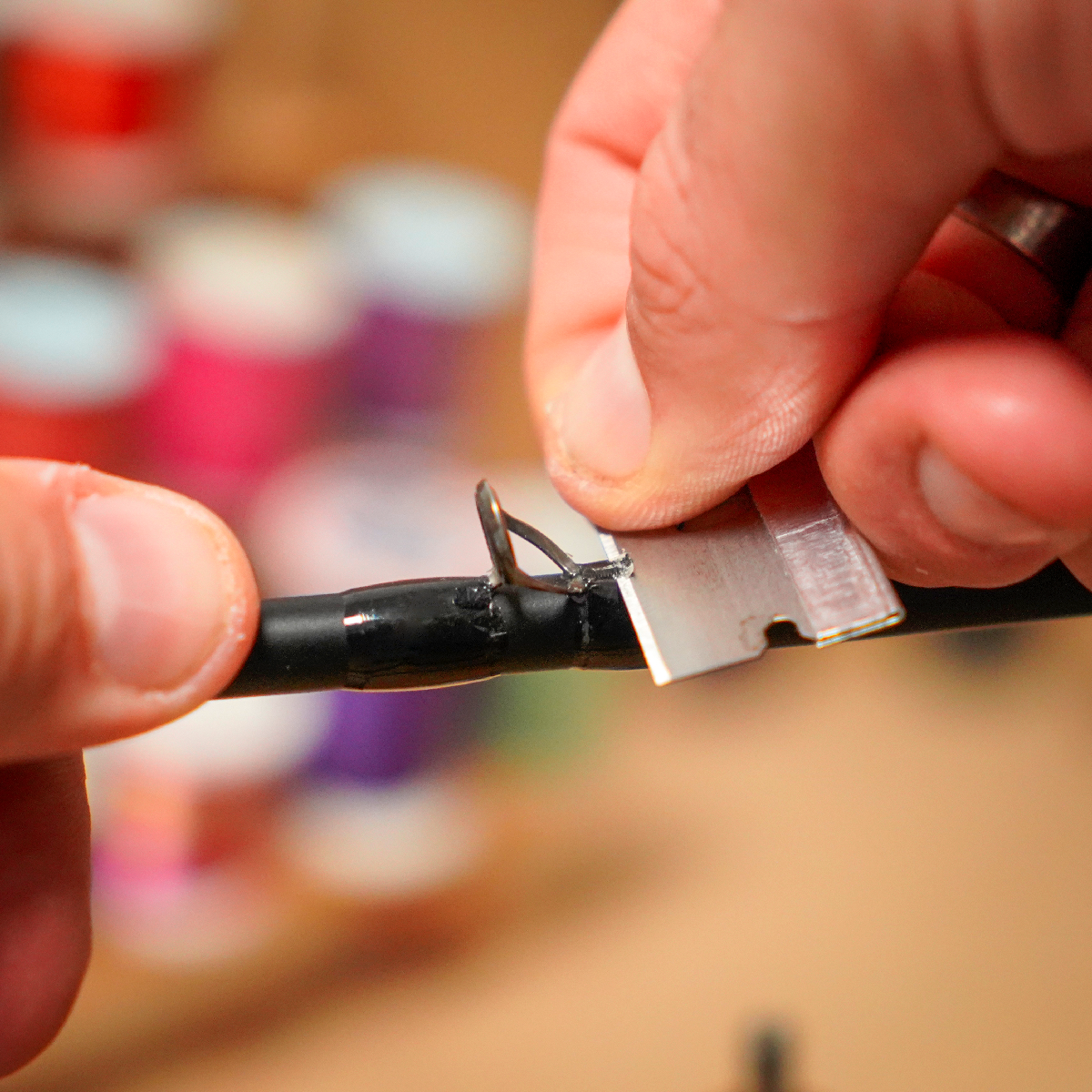
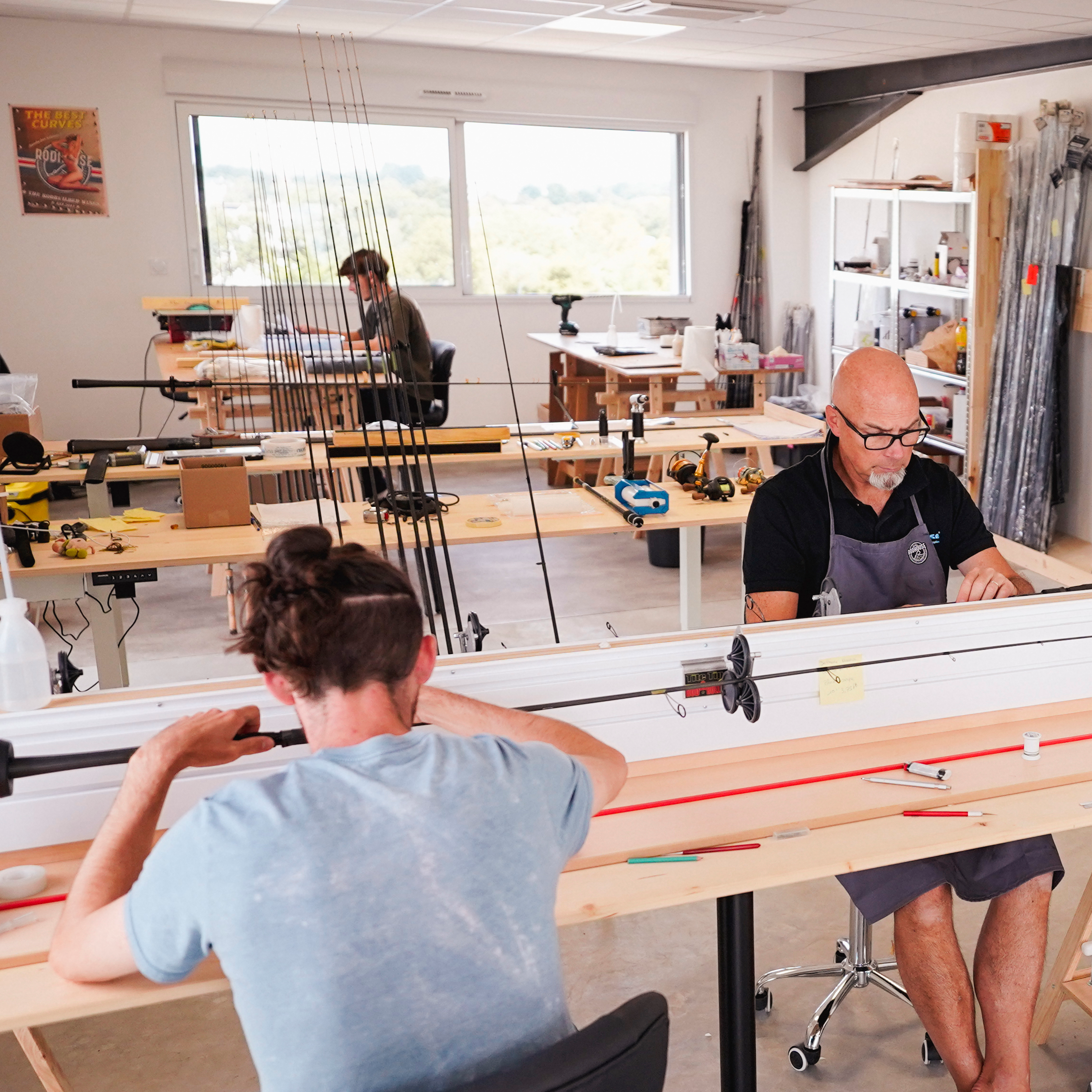
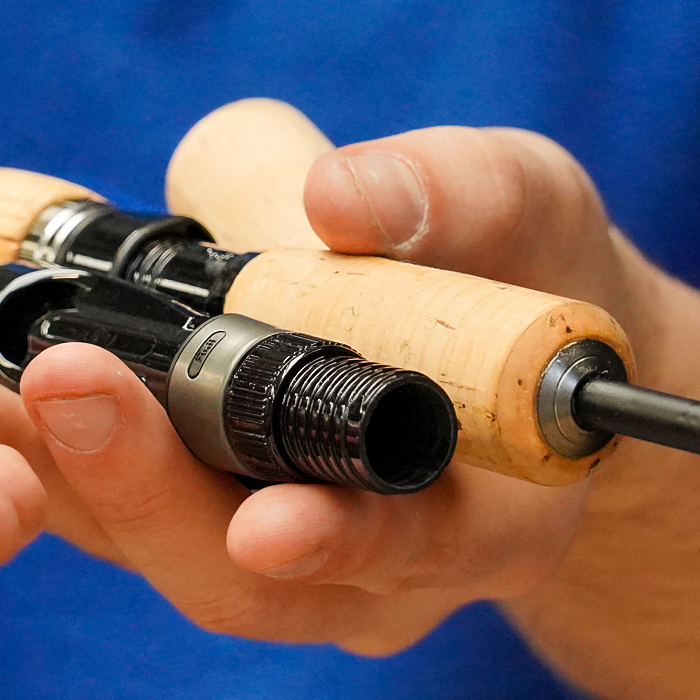
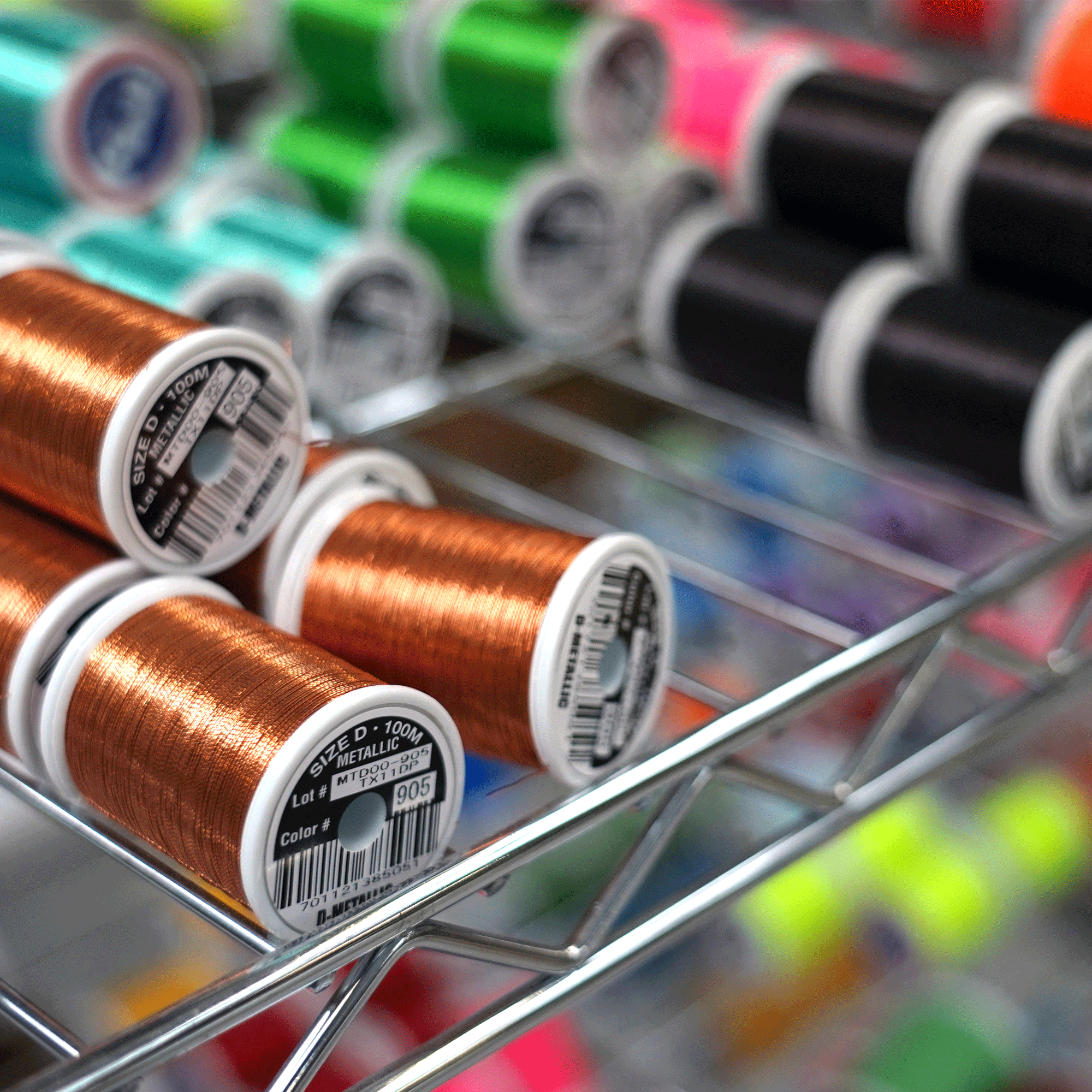
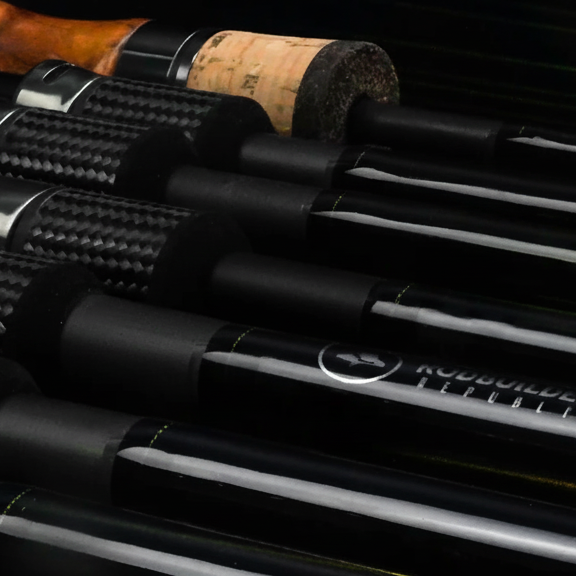
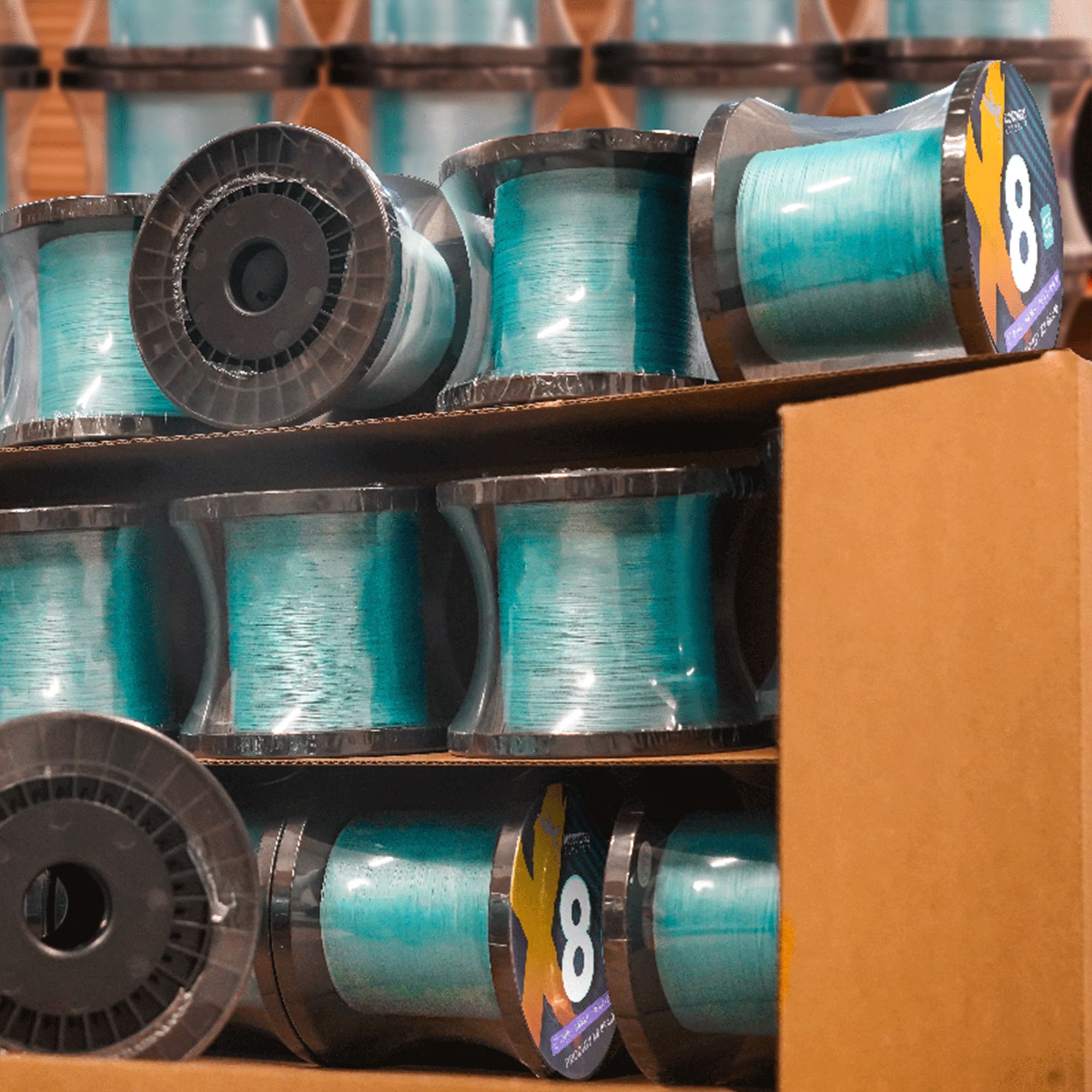
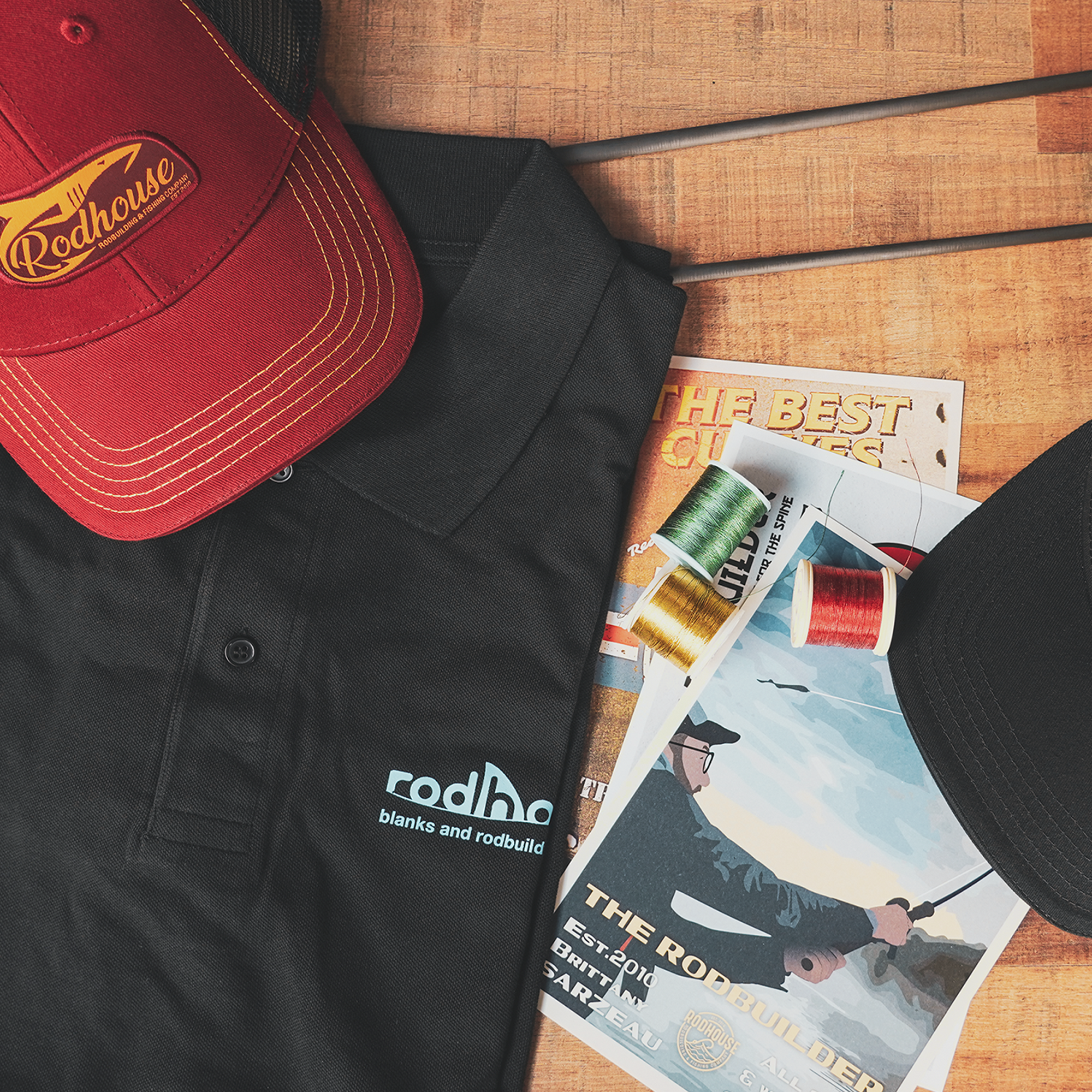
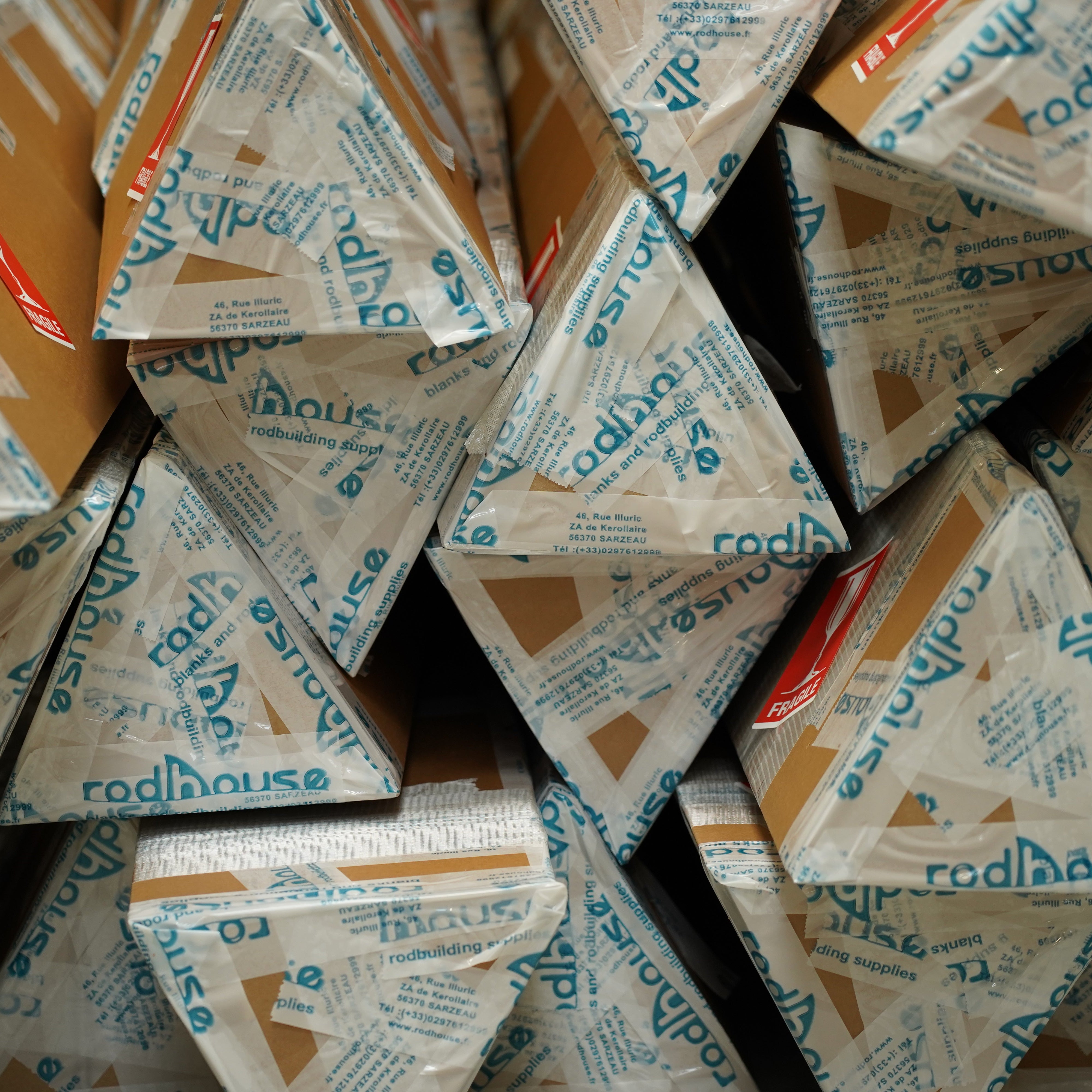
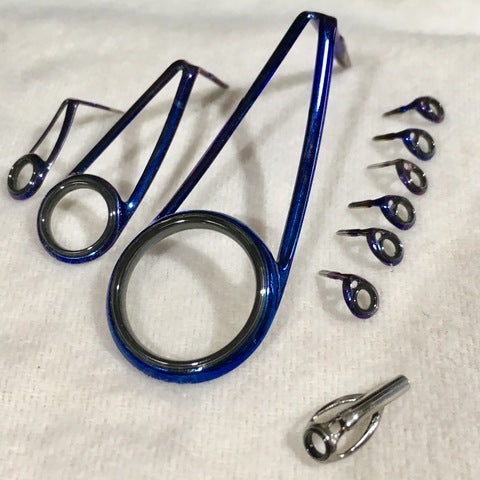
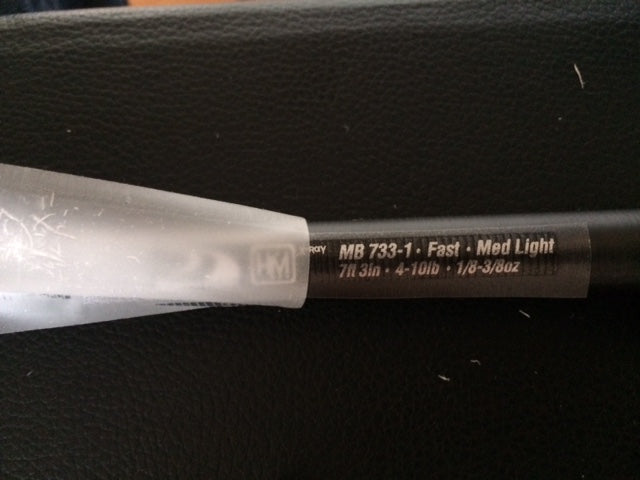
4 comments
Anonymous
Un grand merci pour avoir pris le temps de ce complément d’information très intéressant !
Anonymous
Bien sympa cet article, merci 🙂
Pour ma part je pêche depuis maintenant pas mal d’années en tresse, et de mon expérience ce que j’ai pu remarquer c’est que les diamètres en France, Europe, US, Chine sont complètement faux, ce qui ma fortement posé problème, il est rare de tomber sur un vrai diamètre, c’est donc primordiale de connaitre le produit, mais ce lancer au hasard simplement en regardant l’étiquette non…
J’ai du acheter 4 ou 5 bobines en France sur le net, je ne suis jamais bien tombé étant donné les diamètres extrêmement gros par rapport à celui annoncé…
Grace aux Forums, j’ai pu connaitre les Tresses PE Japonaises avec leurs mesures, depuis c’est la révolution car j’ai exactement la tresse que je veux sans même avoir besoin d’avoir la tresse entre mes mains et ceci dans n’importe quelle marque et modèle.
Vu que je suis assez pointilleux je m’intéressais au diamètre réel max d’une tresse PE japonaise, et j’ai pu constater que le diamètre annoncé diffère car forcement une fois le tissage réalisé ça prend du volume, et au passage ça la rend forcement plus élastique…
Prenons l’exemple d’une PE1 annoncée à 16,5/100, si on la mesure on pourra constater qu’on a plutôt a 20/100 max sur la partie la plus grosse de la tresse et environ 18/100 ou un peu plus sur la partie la plus fine.
il s’agit donc certainement de 16,5/100 mais une fois tissée ça prend du volume.
Pour faire simple et concret il faut ajouter entre 20 et 25% pour avoir le vrai diamètre externe « max » d’une PE Japonaise.
Mais ce qu’il faut réellement retenir et le plus important c’est le chiffre PE, ça a une incidence direct sur la résistance aussi.
Une PE2 comparée à une PE1 c’est deux fois plus de matière et donc 2 fois plus de résistance linéairement, et ça c’est appréciable car c’est aussi simple que ça !
Donc le bon moyen de comparer c’est avec une PE1 :
Une PE1,2 est 20% plus résistante et 20% plus lourde qu’une PE1, pourtant il n’y a que 2/100 de différence réelle.
Une PE1,5 est 50% plus résistante et 50% plus lourde qu’une PE1, pourtant il y a que 5/100 de différence réelle… la différence est énorme déjà entre PE1 et PE1,5, aussi bien en résistance qu’en distance de lancé ainsi qu’en ressenti et passage dans le courant.
Alors lorsqu’on pêche en PE1 et en PE2 c’est le jour et la nuit, c’est comme si vous coupez votre tresse PE2 en deux, imaginez le truc…
Malheureusement en France comme ailleurs ils vendent souvent des tresses équivalentes au japon a du PE1 mais qui en réalité font plus de PE3 pour certaines, et ce sont des marques bien connues…
Du coup pour les résistances c’est aussi simple lorsqu’on connait, alors si vous voulez savoir la résistance d’une tresse japonaise PE en LB :
PE1 : 10LB
PE1,2 : 12LB
PE1,5 : 15LB
PE2 : 20LB
PE3 : 30LB
Etc, etc…
Ces résistances sont beaucoup plus proche de la réalité, et je parle bien évidemment de résistances aux nœuds de raccord tresse/fluoro car la résistance linéaire on s’en fout… mais sachez que d’un nœud à l’autre il peut y avoir 50% de différence en résistance, ce qui est considérable…
Si vous faite un nœud double universel comparé à un noeud FG, la résistance n’aura rien avoir, il est donc fortement probable qu’une personne sera en dessous de 10LB avec une PE1 et une autre personne aura une résistance supérieure à 10LB… Vous l’aurez compris ça dépendra donc du nœud en grosse partie.
Pour moi les tresses Japonaises PE c’est la vie… je persiste en disant « Japonaises », car ne je parle pas des mesures PE chinoises qu’on trouve sur aliexpresse etc, no coment…
Au final je ne regarde même plus le diamètre mais la mesure PE car je sais que ce sera bon, j’ai acheté du Duel, YGK, Varivas, Gosen etc, le diamètre reste identique, il peut y avoir une très légère différence selon le tissage.
Du coup ne vous fiez donc pas aux tresses PE1 qui annonce 22LB, ce sera plutôt entre 8 et 13lb selon votre nœud de raccord et votre façon de le faire.
Attention les tresses 8 brins très glissantes haut de gamme sont très résistantes linéairement mais aux nœuds c’est une catastrophe, alors un bon noeud ça change tout ! Pour ma part c’est le FG, si c’est trop compliqué pour vous, je conseil le Peixet ou Mahin, mais honnêtement je vous déconseille le double universel, c’est vraiment médiocre, surtout pour les tresses fines en 8 brins, et j’en vois beaucoup faire ce nœud… Ceci reste que mon avis 😉
Pour ma part je reste chez YGK, en terme de rapport qualité, résistance, tissage, qualité et prix j’en suis ravi.
JULIEN
Merci pour cette analyse qui ne fait que confirmer qu’il ne faut pas prendre au pied de la lettre ce qui est écrit sur les boites. Une autre piste que je trouverais intéressante concerne les diamètres et notamment sur les tresses « fines ». On entend souvent parler de tresse de 8% ou 10% pour pêcher le sandre ce qui, à mon avis, est une ineptie. De nombreuses marques affichent de tels diamètres sur les boites et bizarrement quand on prend des tresses « équivalentes », de qualité, en PE 0.8 ou PE1 (je ne cite pas de marque mais l’échelle en PE peut donner une indication :D) les diamètres affichés sont généralement plutôt autour des 15%. Bizarrement quand on les a dans les mains la 15% semble plus fine. Pour moi l’explication à cela est qu’une tresse de qualité a un tressage compact et une section (à peu près) ronde donc quand on mesure 15% on le mesure vraiment. Par contre quand on regarde de près les tresses en « 8 ou 10% », elles sont de section plate et/ou avec un tressage moins serré et donc « molles ». Du coup quand on mesure un diamètre soit on ne mesure la tresse que dans le sens de l’épaisseur soit (et ce n’est pas incompatible avec la première proposition) elle s’écrase sous le palmer. Résultat on mesure un chiffre extraordinairement petit qui n’a pas grand chose à voir avec le diamètre réel qu’on pourrait relier aux propriétés optiques (visibilité dans l’eau) ou mécaniques (portance) par exemple. J’aurais pu être provocateur et commencer par écrire « non la tresse de 8%, ça n’existe pas ! ». En fait ça existe, car il existe des tresses PE 0.4 qui correspondent plus ou moins à ces diamètres pour de vrai mais les utilisations sont très spécifiques (UL, eging, etc…) et certainement pas la pêche classique du sandre ou au feeder comme on peut souvent le lire ici et là.
Anonymous
Bravo pour le compte rendu très complet..j y vois bc plus clair sur mes tresses et leur vieillissement prématuré…quelque soit la marque..Ygk, daiwa, Berkeley..etc
Leave a comment
All comments are moderated before being published.
This site is protected by hCaptcha and the hCaptcha Privacy Policy and Terms of Service apply.